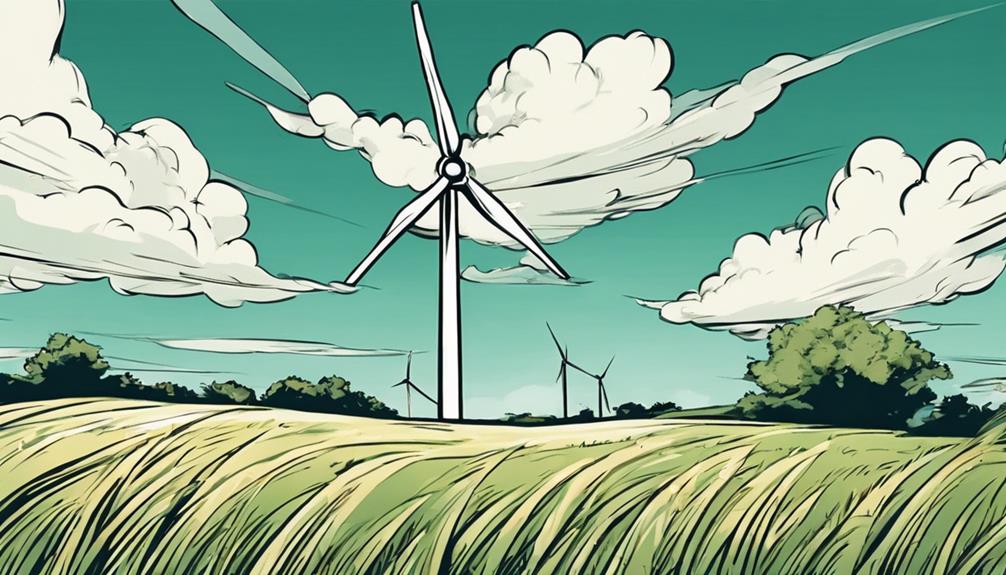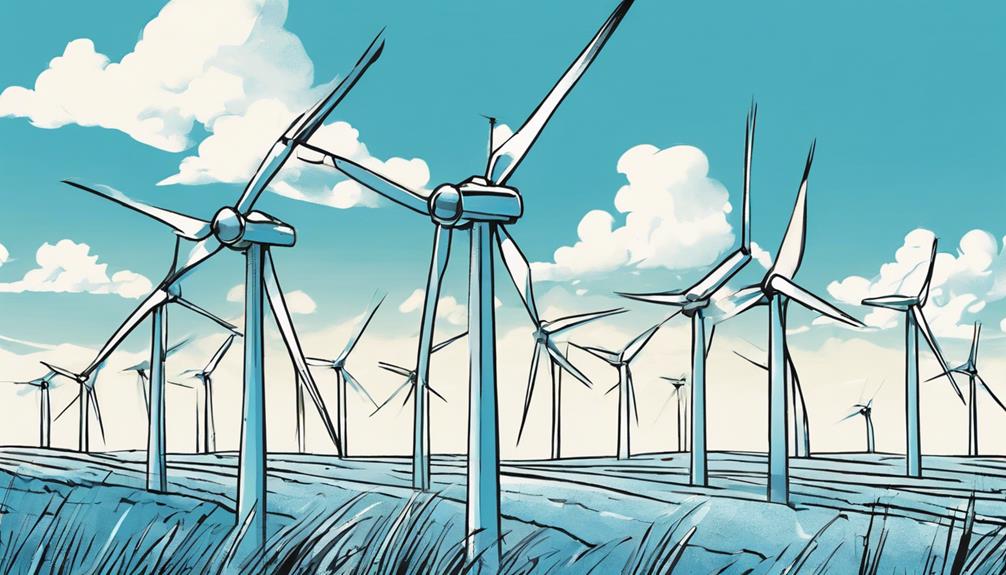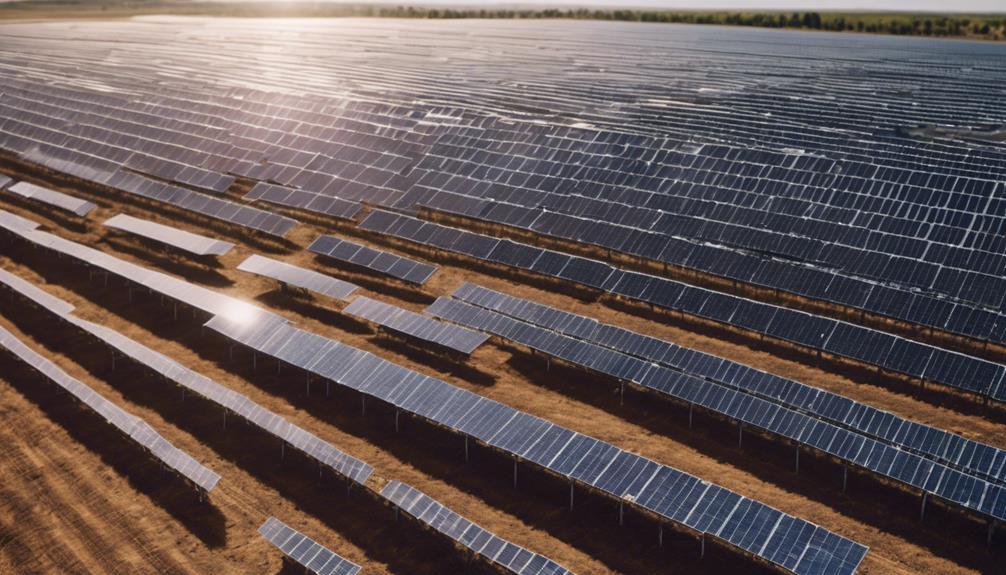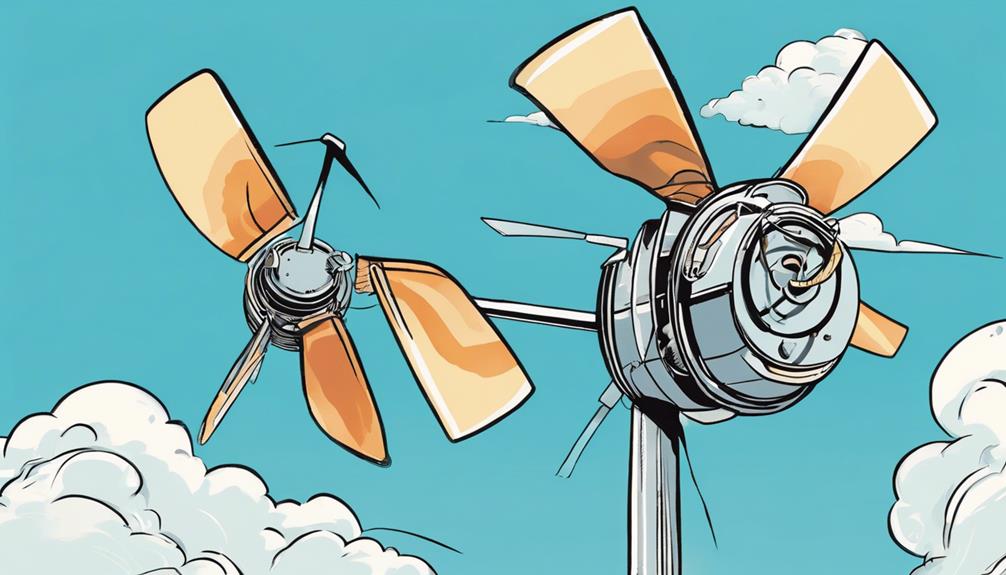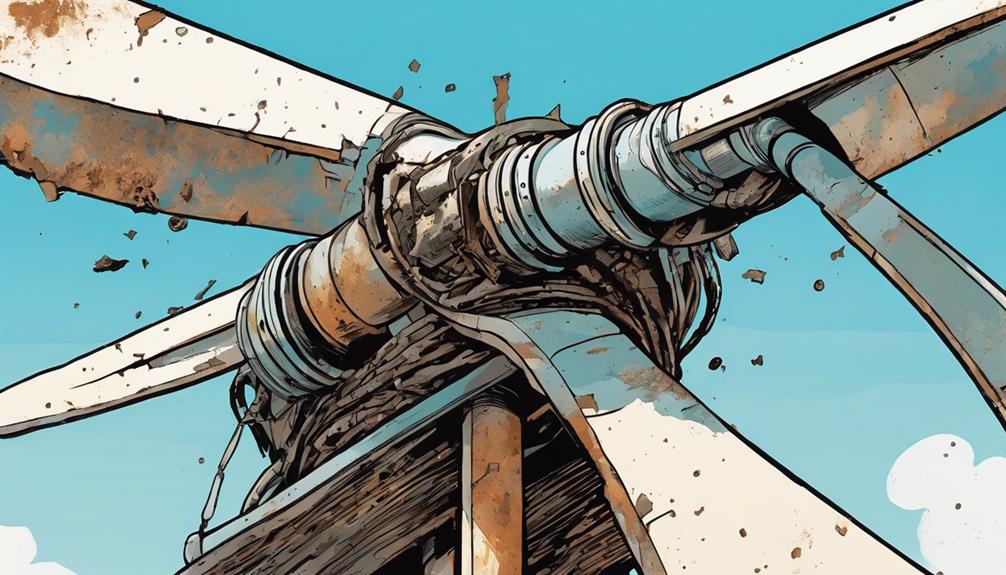Peak wind speeds are essential to harnessing the full capacity of wind turbines, as even slight deviations from the ideal range can greatly affect energy production and turbine longevity. Turbines operate most effectively within a specific wind speed range, with deviations leading to decreased energy output and increased maintenance requirements. Routine monitoring of wind speed is crucial to guarantee safe operation and maximize energy production. Grasping the ideal wind speed range and its influence on turbine performance is pivotal to optimizing energy output and decreasing maintenance expenses. By delving into the complexities of wind turbine operation, you can reveal the keys to achieving peak performance.
Key Takeaways
- Turbines operate efficiently within specific wind speed ranges, and deviations impact energy production.
- Optimal wind speeds ensure turbine safety, efficient energy conversion, and maximum energy production.
- Cut-in speed is the minimum wind speed for turbine operation, while maximum wind speed ensures safety and efficiency.
- Wind speed variability affects performance, and adjusting blade angles optimizes power generation in low wind speeds.
- Accurate wind speed monitoring is essential for turbine integrity and optimal energy production.
Wind Turbine Operational Efficiency
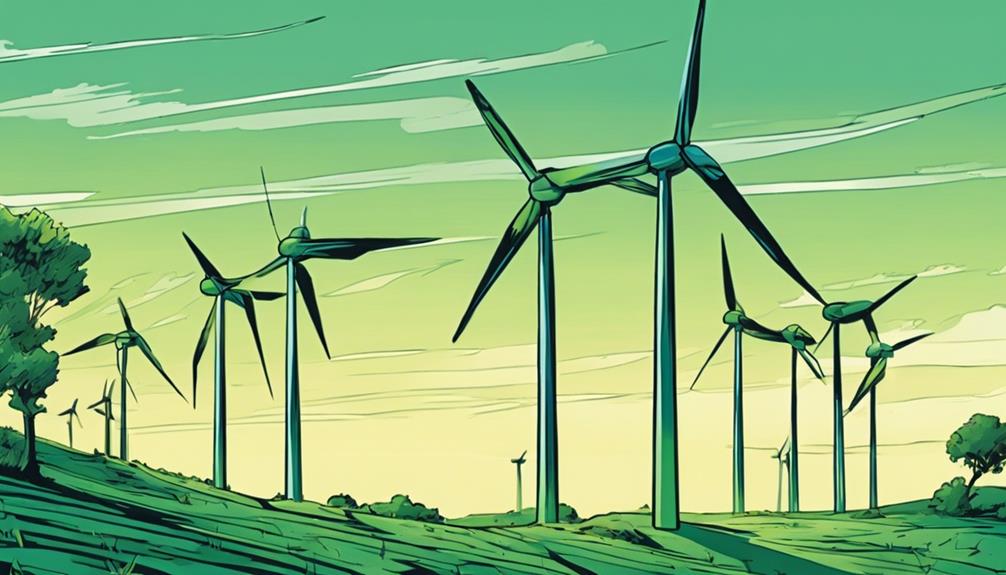
Optimizing wind turbine operational efficiency relies heavily on maintaining a delicate balance between wind speed and turbine performance. Even slight deviations from the ideal wind speed range can have a substantial impact on energy production. Wind turbines operate within their design limits to efficiently convert wind energy into electricity. It is crucial for operators to constantly monitor the wind speed and make adjustments to the turbine’s orientation and speed to maximize energy production. Additionally, regular maintenance and prompt repairs are essential to ensure that the turbine operates at peak efficiency. It is also important to distinguish between a wind turbine vs windmill, as they serve different purposes despite their similar appearances.
Regular monitoring of wind speed is vital to guarantee safe operation within the specified range. Wind speed variability can greatly impact performance and maintenance needs. Exceeding the maximum wind speed limit can lead to damage or failure, while wind coming from different angles or changing direction can cause turbulence and reduce efficiency.
Impact of Wind Speed Variability
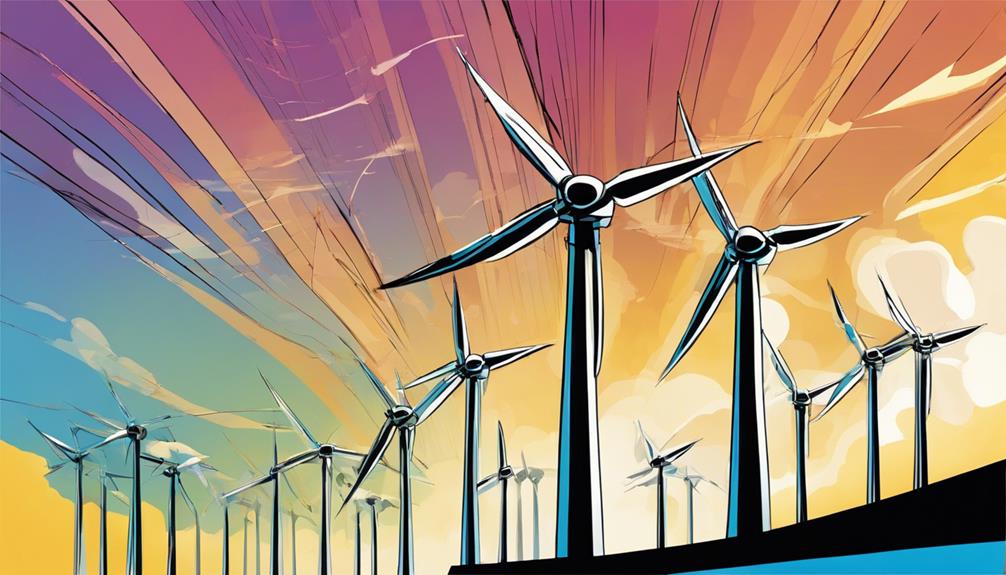
Wind speed variability greatly impacts energy production and maintenance needs. Turbines are designed to operate within a specific wind speed range to ensure effective energy conversion. Exceeding the maximum wind speed limit can lead to significant impacts on turbine performance and even damage or failure. Conversely, low wind speeds can result in reduced energy production.
Wind coming from different angles or changing direction can cause turbulence, reducing efficiency. Adjusting blade angles and pitch can optimize power generation in low wind speeds, but consistent wind patterns in strategic locations are necessary to minimize low wind speed occurrences.
Effective wind speed monitoring is vital to ensure safe and efficient turbine operation.
Optimal Wind Speed Range
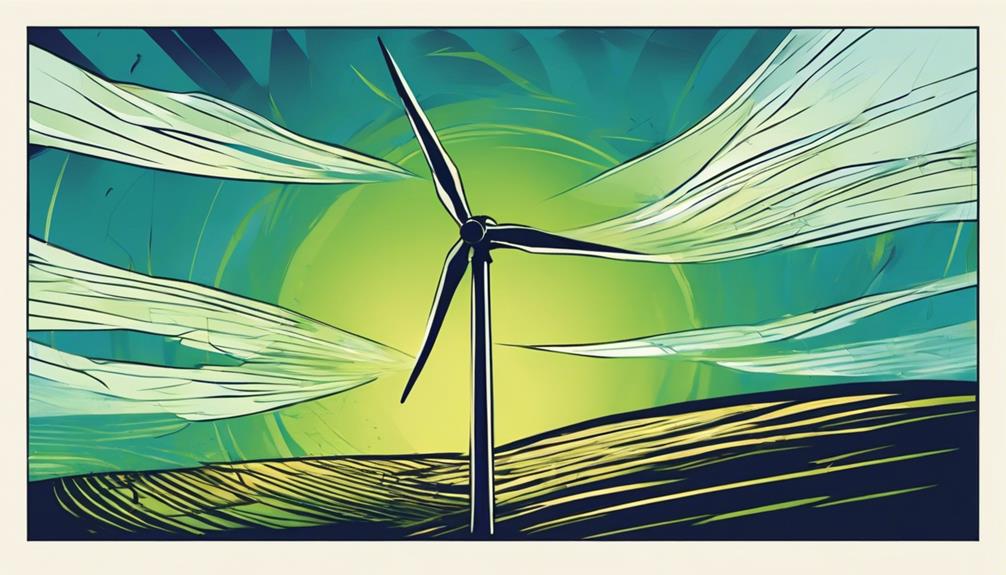
Turbines need a specific wind speed range to operate effectively, with a minimum and maximum wind speed threshold necessary for best energy production. The cut-in speed, typically between 6 to 9 mph, is the minimum wind speed needed for the turbine to start operating.
Conversely, the maximum wind speed, usually around 55 to 70 mph, ensures turbine safety and efficiency. Operating within this ideal range allows turbines to maximize energy production while minimizing wear and tear.
Exceeding the maximum wind speed can lead to damage or failure, while wind speeds below the cut-in speed result in reduced energy output. Accurate wind speed monitoring is essential to maintain turbine integrity and optimize performance.
Blade Configuration and Performance
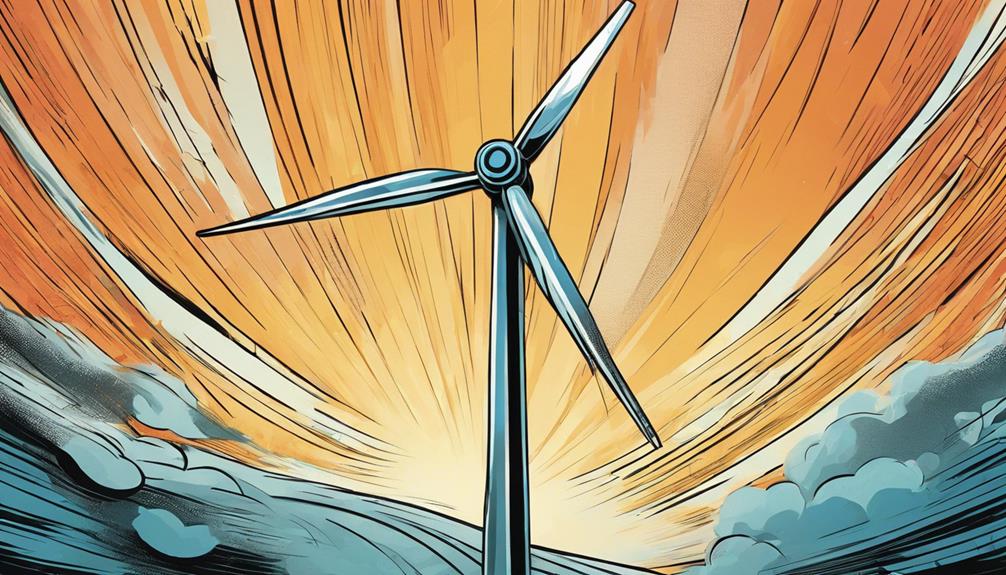
The arrangement and number of blades on a wind turbine rotor play an essential role in determining its overall performance and energy production capabilities. The most common configurations are two-blade, three-blade, four-blade, five-blade, and six-blade designs, each with unique advantages and disadvantages.
Two-blade turbines excel in low and variable wind speeds, while three-blade turbines prioritize efficiency and noise reduction. Four-blade turbines offer stability, cost efficiency, and increased energy production. Five-blade turbines provide increased torque at lower speeds and better resistance against strong gusts.
The ideal blade configuration depends on factors such as performance, energy production, material costs, wind conditions, and budget constraints. By selecting the right blade configuration, turbines can optimize energy production and reduce maintenance needs.
Factors Influencing Blade Choice
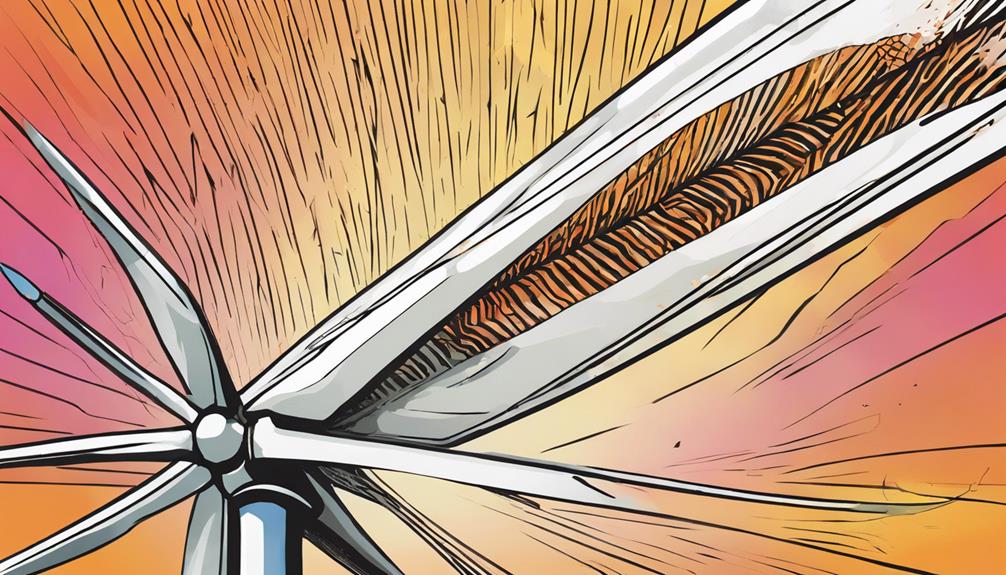
Several significant factors influence the selection of an ideal blade configuration for a wind turbine. These factors include performance, energy production, material costs, wind conditions, and budget constraints. The chosen arrangement greatly impacts turbine performance, maintenance, and installation complexity.
Environmental conditions, such as wind speed and direction, play a vital role in determining the ideal number of blades. For example, turbines in areas with low and variable wind speeds may benefit from two-blade designs, while those in regions with stronger winds may require three or more blades for best energy production.
Turbine Safety and Maintenance
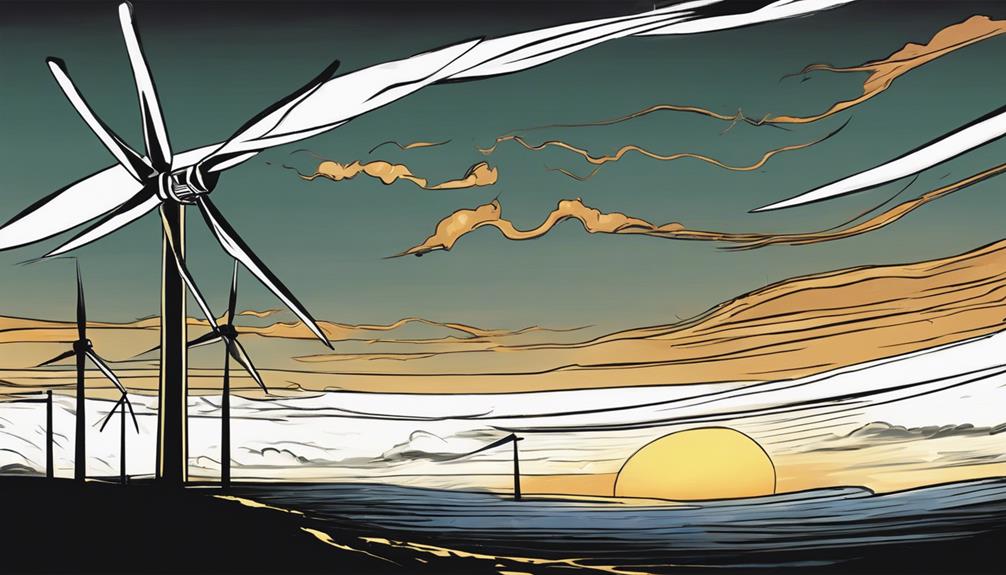
Regular wind speed monitoring and adherence to ideal operating ranges are critical for ensuring turbine safety and preventing damage from excessive or fluctuating winds. Turbine safety is compromised when wind speeds exceed the maximum design limit, leading to potential failure or damage. Conversely, operating within the best range guarantees efficient energy production and minimizes maintenance needs.
To maintain turbine safety and efficiency, the following measures are essential:
- Regular wind speed monitoring: Continuous monitoring of wind speeds helps in identifying potential issues and taking prompt corrective action.
- Adherence to design limits: Operating within the specified wind speed range prevents damage and ensures peak performance.
- Scheduled maintenance: Regular maintenance checks help in identifying and addressing potential issues before they become major problems.
Maximizing Energy Production
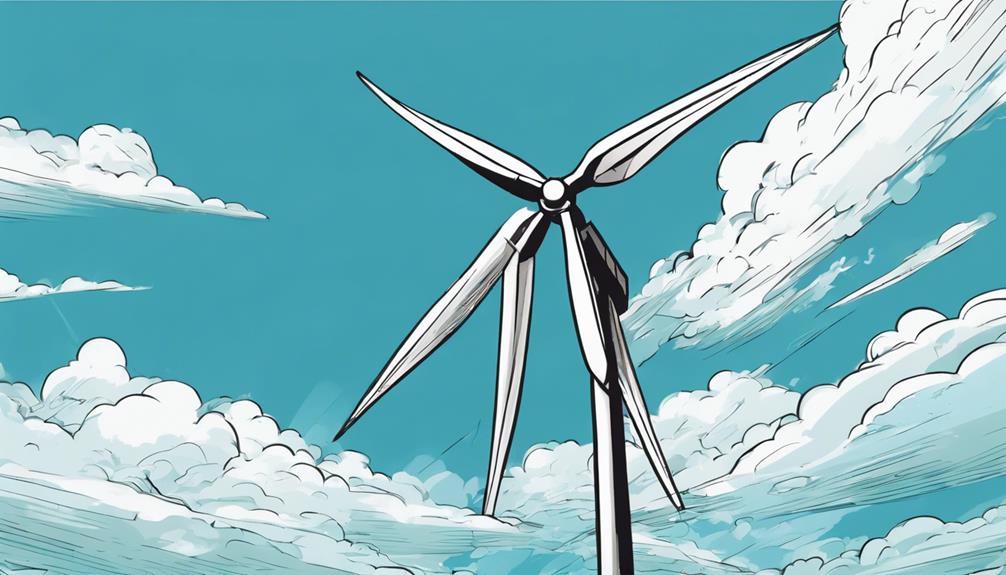
Maximizing wind turbine performance relies on accurate wind speed monitoring to maximize energy production within the ideal operating range. Wind turbines operate efficiently within a specific wind speed range, typically between 6-9 mph and 55-70 mph. Monitoring wind speed guarantees turbines operate within design limits, converting wind energy into electricity efficiently.
Exceeding maximum wind speed limits can lead to decreased performance, damage, or failure. Conversely, adjusting blade angles and pitch optimizes power generation in low wind speeds. Consistent wind patterns in strategic locations minimize low wind speed occurrences, allowing turbines to operate at maximum capacity.
Frequently Asked Questions
How Does Wind Direction Affect Turbine Performance and Efficiency?
Wind direction greatly impacts turbine performance and efficiency, as turbines operate best with headwind and are affected by turbulence and reduced efficiency when wind comes from different angles or changing directions.
Can Wind Turbines Operate Efficiently in Extreme Weather Conditions?
Wind turbines can operate efficiently in extreme weather conditions, but within design limits; monitoring wind speed is essential to guarantee safe operation and peak energy production, as excessive winds can lead to damage or failure.
What Is the Ideal Rotor Diameter for Maximum Energy Production?
Ironically, the ideal rotor diameter for maximum energy production is often overlooked, yet it's essential. A larger rotor diameter allows for more energy capture, but excessive size can compromise structural integrity and efficiency.
How Do Environmental Factors Influence Wind Turbine Placement Decisions?
Environmental factors such as wind patterns, turbulence, and speed variability greatly influence wind turbine placement decisions, as ideal locations with consistent wind speeds and minimal turbulence maximize energy production and reduce maintenance needs.
Are There Any Alternative Materials Being Explored for Wind Turbine Blades?
Researchers are exploring alternative materials like advanced composites, carbon fiber, and 3D-printed components to reduce weight, increase durability, and lower production costs for wind turbine blades, enhancing overall efficiency and sustainability.
How Does Wind Turbine Performance Depend on Optimal Wind Speeds?
Wind turbine performance relies heavily on optimal wind speeds to generate maximum energy output. The right wind speed ensures efficient rotation of the blades, impacting the overall productivity. In addition to wind speed, proper and consistent maintenance, including optimal lubrication for wind turbines, is vital for sustained performance and longevity.
How Do Wind Speeds Impact the Efficiency of Turbines for Power Generation?
Wind speeds play a crucial role in the efficiency of turbines to harness wind power light bulbs for power generation. Higher wind speeds result in greater kinetic energy, allowing turbines to generate more electricity. However, extremely high wind speeds can also cause damage to the turbines, impacting their overall efficiency.
Conclusion
As the symphony of wind and turbine harmonizes, the sweet spot of ideal wind speeds reveals the full potential of renewable energy.
Like a master conductor, wind speed orchestrates the dance of blades, precision-crafted to extract the maximum energy from the breeze.
Within the golden range of 7-25 meters per second, turbines sing in perfect harmony, generating electricity with effortless elegance.
